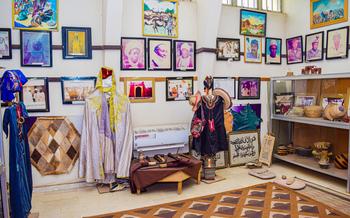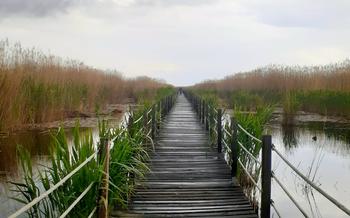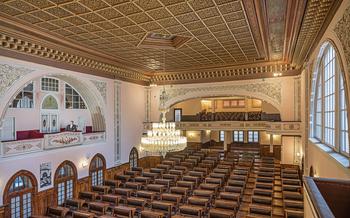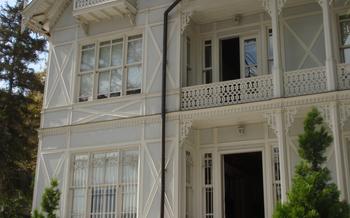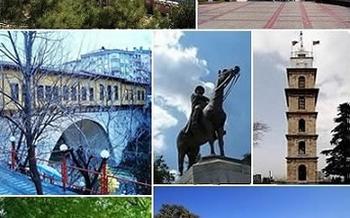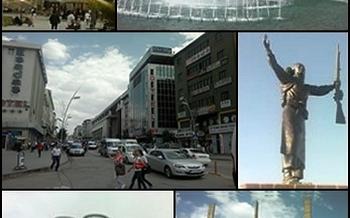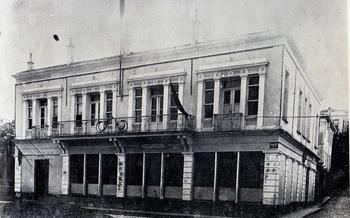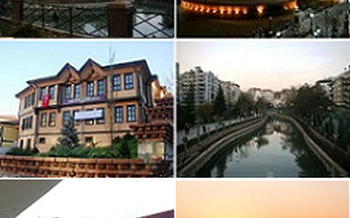
Osmaniye Atatürk House Museum
- History of the Osmaniye Atatürk House Museum
- Location and Accessibility:
- Architectural Features
- Exhibits and Collections
- Personal Belongings of Atatürk
- Historical Photographs and Documents
- Interactive Displays and Multimedia Presentations
- Guided Tours and Educational Programs
- Visitor Amenities and Facilities
- Hours of Operation and Admission Fees
- Surrounding Attractions and Activities
- Tips for Planning Your Visit
- Local Cuisine and Dining Options
- Respecting Local Customs and Traditions
- Insider Tip: Unveiling Osmaniye's Hidden Treasures
History of the Osmaniye Atatürk House Museum
The Osmaniye Atatürk House Museum stands as a testament to the rich history of Turkey and the pivotal role played by Mustafa Kemal Atatürk in the country's struggle for independence. The museum is housed in a historic building that once served as the headquarters of the Turkish National Forces during the Turkish War of Independence. It was here that Atatürk, the founder of modern Turkey, resided and strategized alongside his comrades during the crucial battles that shaped the nation's destiny.
The establishment of the museum in 1981 aimed to preserve and showcase the legacy of Atatürk and the significant events that transpired within these walls. The museum serves as a repository of artifacts, documents, and personal belongings that offer visitors a glimpse into the life and achievements of this visionary leader. Moreover, it sheds light on the pivotal role of Osmaniye during the Turkish War of Independence, highlighting the city's contributions to the national cause.
By visiting this museum, visitors are transported back in time to relive the heroic struggle for independence and gain a deeper understanding of Atatürk's leadership and the sacrifices made by the Turkish people during this transformative period in their history.
Location and Accessibility:
The Osmaniye Atatürk House Museum is situated at the heart of Osmaniye, a city in southern Turkey known for its rich history and cultural heritage. It is conveniently located on Atatürk Boulevard, a prominent thoroughfare named after Mustafa Kemal Atatürk, the founder of the Turkish Republic. The museum's proximity to other landmarks, such as the Osmaniye Castle and the Grand Mosque, makes it an ideal starting point for exploring the city's historical and cultural attractions.
Visitors can easily reach the museum using public transportation. Several bus lines stop nearby, and the Osmaniye Train Station is just a short walk away. For those driving, ample parking is available in the vicinity of the museum, ensuring a hassle-free visit. The museum is also wheelchair accessible, with ramps and elevators providing convenient access to all levels of the building, catering to the needs of individuals with disabilities.
Architectural Features
The Osmaniye Atatürk House Museum is renowned for its distinctive architectural style, which blends traditional Turkish elements with modern influences. The building's exterior showcases intricate stonework and decorative arches, reflecting the region's rich cultural heritage. The interior, on the other hand, boasts spacious rooms with high ceilings, adorned with elegant furnishings and personal belongings that once belonged to Atatürk.
The construction of the house utilized local materials, such as stone and wood, ensuring its harmony with the surrounding environment. The attention to detail in the architectural features is evident in the intricate carvings and moldings that adorn the walls, doors, and windows. The use of natural light, through strategically placed windows, creates a warm and inviting atmosphere throughout the museum.
Preservation efforts have been meticulously undertaken to maintain the authenticity of the building. Original features, such as the wooden floors, fireplaces, and ornate ceilings, have been carefully restored to their former glory. The museum's dedication to preserving the architectural integrity of the house ensures that visitors can experience a genuine glimpse into the past.
Exhibits and Collections
The Osmaniye Atatürk House Museum houses a remarkable collection of exhibits and artifacts that provide a glimpse into the life and achievements of Mustafa Kemal Atatürk, the founder of the Turkish Republic. Among the highlights of the museum's collection are personal belongings, historical photographs, and documents that shed light on Atatürk's role in the Turkish War of Independence and the establishment of the Republic.
Personal Belongings:
The museum proudly displays a range of personal items that belonged to Atatürk, including his uniforms, military gear, medals, and everyday objects. These artifacts offer a tangible connection to the man himself and provide insights into his personal style and habits.
Historical Photographs:
The museum's collection of historical photographs documents Atatürk's life and career, from his early years as a military officer to his rise as a national leader. These images capture key moments in Turkish history, including the War of Independence, the foundation of the Republic, and Atatürk's subsequent reforms.
Documents and Manuscripts:
The museum houses a valuable collection of documents and manuscripts related to Atatürk and the Turkish War of Independence. These include official documents, letters, and speeches that shed light on the political and military strategies employed during this pivotal period in Turkish history.
The arrangement of the exhibits in the Osmaniye Atatürk House Museum follows a chronological order, allowing visitors to trace Atatürk's journey from a young military officer to the revered father of the Turkish nation. Interactive displays and multimedia presentations complement the exhibits, providing visitors with additional information and insights into Atatürk's life and legacy.
Personal Belongings of Atatürk
The Osmaniye Atatürk House Museum proudly displays a collection of personal belongings that once belonged to Mustafa Kemal Atatürk. These items offer valuable insights into his life, personality, and the significant role he played in shaping modern Turkey. Among the most notable artifacts are his uniforms, medals, and personal effects.
One of the highlights of the collection is Atatürk's military uniform, which he wore during the Turkish War of Independence. The uniform is a testament to his dedication and bravery as a commander. Visitors can also see his collection of medals and decorations, which recognize his outstanding achievements and contributions to the nation.
Beyond his military attire, the museum showcases Atatürk's personal items, such as his writing desk, eyeglasses, and clothing. These objects provide a glimpse into his daily life and habits. His desk, for instance, holds personal letters, maps, and documents that shed light on his strategic thinking and decision-making process.
The stories associated with these artifacts make them even more compelling. For example, one of Atatürk's favorite possessions was a silver pocket watch gifted to him by his mother. He is said to have carried it with him throughout his military campaigns, emphasizing the importance he placed on punctuality and discipline.
The museum takes meticulous care in preserving and protecting these valuable artifacts. They are displayed in secure cases with detailed descriptions that provide historical context and significance. Visitors are encouraged to handle the exhibits with care and respect, as they represent a tangible connection to one of Turkey's most revered leaders.
Historical Photographs and Documents
The Osmaniye Atatürk House Museum houses a significant collection of historical photographs and documents related to Mustafa Kemal Atatürk and the Turkish War of Independence. These visual records offer a glimpse into the past, providing valuable insights into the events and personalities that shaped the course of Turkish history.
The photographs capture candid moments from Atatürk's life, showcasing his interactions with fellow soldiers, civilians, and world leaders. They depict his visits to different regions of Turkey, his participation in military campaigns, and his role in the establishment of the Turkish Republic. Each photograph tells a story, revealing Atatürk's charisma, determination, and commitment to his people.
The documents on display include official correspondence, military orders, and personal letters written by Atatürk. These documents provide a written record of his thoughts, strategies, and decisions during the war. They shed light on his leadership style, his diplomatic efforts, and his vision for a modern and independent Turkey.
By preserving and showcasing these historical photographs and documents, the Osmaniye Atatürk House Museum plays a crucial role in educating visitors about the Turkish War of Independence and the life of Mustafa Kemal Atatürk. These visual and written records serve as a reminder of the sacrifices made and the challenges faced by the Turkish people in their quest for freedom and independence.
Interactive Displays and Multimedia Presentations
The Osmaniye Atatürk House Museum utilizes technology to enhance the visitor experience and provide additional information beyond the static exhibits. Interactive displays and multimedia presentations bring the history of the Turkish War of Independence and Atatürk's role to life. Visitors can engage with touchscreens, watch historical footage, and listen to audio recordings that offer a deeper understanding of the events that unfolded during that pivotal period. These interactive elements add a dynamic dimension to the museum's narrative, catering to visitors of all ages and learning styles. The museum's commitment to incorporating technology ensures that the legacy of Atatürk and the Turkish War of Independence remains relevant and accessible to contemporary audiences.
Guided Tours and Educational Programs
The Osmaniye Atatürk House Museum offers guided tours that provide visitors with a deeper understanding of the life and achievements of Mustafa Kemal Atatürk and the significance of the Turkish War of Independence. Knowledgeable guides lead these tours, sharing historical insights and anecdotes that bring the museum's exhibits to life. Visitors can learn about Atatürk's vision for a modern Turkey, his leadership during the war, and the lasting impact of his reforms.
The museum also conducts educational programs and workshops for students and the general public. These programs aim to promote historical awareness and foster a sense of national pride among the younger generation. Through interactive activities, multimedia presentations, and hands-on experiences, participants gain a deeper understanding of Turkey's history and the role of Atatürk in shaping the nation's destiny.
Visitor Amenities and Facilities
The Osmaniye Atatürk House Museum offers a range of amenities and facilities to enhance the visitor experience. A gift shop is located on the premises, where visitors can purchase souvenirs, mementos, and publications related to Mustafa Kemal Atatürk and the Turkish War of Independence. Restrooms are available for the convenience of visitors, ensuring a comfortable and hassle-free visit. Drinking fountains are also provided to quench thirst and stay hydrated, especially during hot summer months. Seating areas are thoughtfully placed throughout the museum, allowing visitors to take a break, rest their feet, and reflect on the exhibits they have encountered. Furthermore, accessibility features such as ramps, elevators, and wheelchair-accessible restrooms are in place to accommodate visitors with disabilities, ensuring an inclusive and welcoming environment for all.
Hours of Operation and Admission Fees
The Osmaniye Atatürk House Museum is open to the public from Tuesday to Sunday, between 9:00 AM and 5:00 PM. It is closed on Mondays and national holidays. Visitors are advised to check the museum's official website or contact them directly for any updates or changes in the operating hours.
Admission to the museum is free of charge for all visitors. This allows everyone to have the opportunity to learn about the life and legacy of Mustafa Kemal Atatürk, as well as the region's rich cultural heritage, without any financial barriers.
The museum's commitment to accessibility and inclusivity extends to its admission policy, ensuring that everyone has the chance to explore and appreciate this important historical site.
Surrounding Attractions and Activities
The Osmaniye Atatürk House Museum is conveniently located near several other notable landmarks and attractions that visitors can explore before or after their visit. The Grand Mosque of Osmaniye, with its impressive architecture and intricate tilework, is a must-see for those interested in religious and cultural heritage. The Osmaniye Museum, on the other hand, offers a comprehensive overview of the region's history and culture through its collection of artifacts and exhibits.
For those seeking a taste of the local cuisine, the streets surrounding the museum are lined with charming restaurants and cafes serving up traditional Turkish delicacies. From börek and pide to kebabs and baklava, visitors can indulge in a culinary journey that reflects the region's rich gastronomic heritage.
The city of Osmaniye also hosts various cultural events, festivals, and performances throughout the year, providing visitors with an opportunity to immerse themselves in the vibrant local culture. From traditional music concerts to dance performances and art exhibitions, there is always something to experience and enjoy in this dynamic city.
For those with time to spare, a day trip to the nearby city of Adana is highly recommended. Adana is renowned for its historical sites, such as the Misis Mound and the Adana Archaeological Museum, as well as its culinary delights, including the famous Adana kebab.
Tips for Planning Your Visit
To ensure a memorable and enriching experience at the Osmaniye Atatürk House Museum, consider the following tips:
-
Plan Your Visit: Choose a weekday or morning visit to avoid crowds and fully immerse yourself in the museum's exhibits. Combine your visit with other attractions in Osmaniye, such as the Osmaniye Museum or the historic Uzun Çarşı, to create a comprehensive itinerary.
-
Capture Memorable Moments: Bring your camera or smartphone to capture the museum's unique exhibits and architectural details. Take advantage of the natural light streaming through the windows to create beautiful photographs.
-
Engage with the Exhibits: Don't hesitate to engage with the interactive displays and multimedia presentations offered at the museum. These elements enhance the visitor experience and provide additional insights into Atatürk's life and the Turkish War of Independence.
-
Consider Guided Tours: If available, consider joining a guided tour of the museum. Knowledgeable guides can provide historical context and anecdotes, bringing the exhibits to life and enriching your understanding of Atatürk's legacy.
-
Traveling with Children: Make the museum visit enjoyable for young visitors by explaining the significance of Atatürk and his contributions in a child-friendly manner. Interactive displays and multimedia presentations can help capture their attention and make the experience more engaging.
Local Cuisine and Dining Options
When visiting Osmaniye, don't miss the opportunity to savor the local cuisine, which offers a delectable blend of Turkish and regional flavors. One must-try dish is "Osmaniye Kebabı," a succulent grilled meat dish that is a specialty of the region. For a taste of traditional Turkish cuisine, try "mantı," small dumplings filled with spiced meat and topped with garlic yogurt and tomato sauce. Vegetarians will delight in "yaprak sarması," tender grape leaves stuffed with rice, herbs, and spices. To satisfy your sweet tooth, indulge in "künefe," a crispy pastry filled with melted cheese and drizzled with sweet syrup.
For a memorable dining experience, head to one of the many restaurants and eateries near the Osmaniye Atatürk House Museum. These establishments offer a range of options, from traditional Turkish fare to international cuisine. For a taste of authentic local flavors, try "Taşhan Restaurant," known for its delicious kebabs and regional specialties. "Kardeşler Lokantası" is another popular choice, offering a wide selection of Turkish dishes in a warm and welcoming atmosphere. Vegetarian and vegan visitors can find plenty of options at "Doğa Restoran," which serves up an array of fresh and flavorful plant-based dishes.
Respecting Local Customs and Traditions
When visiting the Osmaniye Atatürk House Museum and interacting with the local community, it's essential to be mindful of local customs and traditions. This will ensure a respectful and enjoyable experience for everyone. Dress modestly and conservatively, covering your shoulders and knees. Avoid wearing revealing or tight clothing. When entering a mosque or other religious site, remove your shoes and cover your head. Be respectful of local religious beliefs and practices. During the Muslim holy month of Ramadan, it's important to be mindful of fasting practices and avoid eating, drinking, or smoking in public during daylight hours. When interacting with locals, be polite and respectful. A simple greeting and a smile can go a long way. If you don't speak Turkish, try to learn a few basic phrases like "Merhaba" (hello) and "Teşekkür ederim" (thank you). Asking for assistance or directions is acceptable, but be patient and understanding if someone doesn't speak English.
Insider Tip: Unveiling Osmaniye's Hidden Treasures
Beyond the historical significance of the Osmaniye Atatürk House Museum, the city of Osmaniye itself holds a wealth of hidden treasures waiting to be discovered. One such gem is the Kurşunlu Mosque, a 16th-century architectural marvel nestled in the heart of the old city. With its intricate tilework, elegant minarets, and serene atmosphere, this mosque offers a glimpse into the rich cultural heritage of Osmaniye.
For a unique culinary experience, venture into the local markets and indulge in the flavors of Osmaniye's street food. From freshly baked pide to tantalizing kebabs, the city's culinary delights are sure to satisfy every palate. Don't miss the opportunity to savor the famous Osmaniye künefe, a crispy pastry filled with melted cheese and topped with sweet syrup, a local specialty that will leave you craving for more.
To delve deeper into the local culture, consider joining a traditional Turkish coffee ceremony. In many cafes and tea gardens, you can witness the art of preparing and serving Turkish coffee, a ritual that holds a special place in Turkish hospitality. Engage with the locals, learn about their customs, and savor the rich aroma and flavor of this beloved beverage.
For those seeking an active adventure, trekking and hiking trails in the nearby mountains offer breathtaking views and a chance to explore the region's natural beauty. Whether you're an experienced hiker or simply looking for a leisurely stroll, Osmaniye's diverse landscapes provide trails suitable for all levels of fitness.
Remember, the true essence of Osmaniye lies in its people. Engage with the locals, ask questions, and embrace their warmth and hospitality. They will gladly share their stories, customs, and recommendations, ensuring that your visit to Osmaniye becomes a truly memorable and enriching experience.
